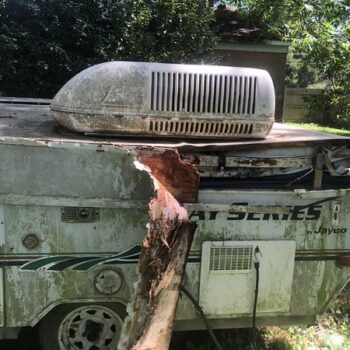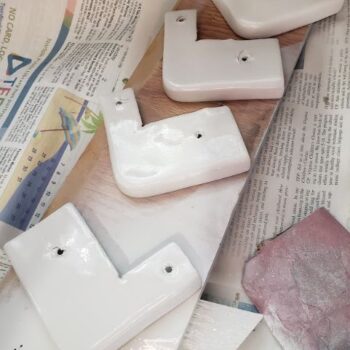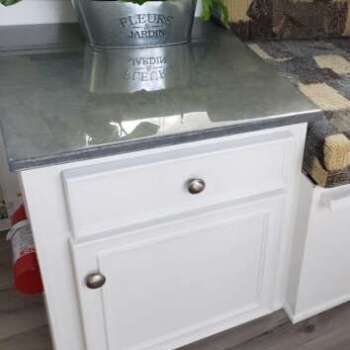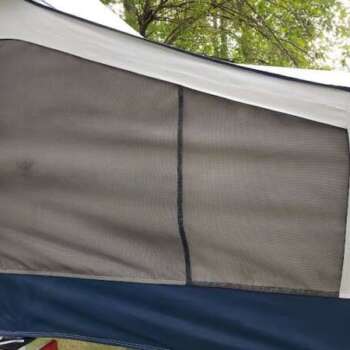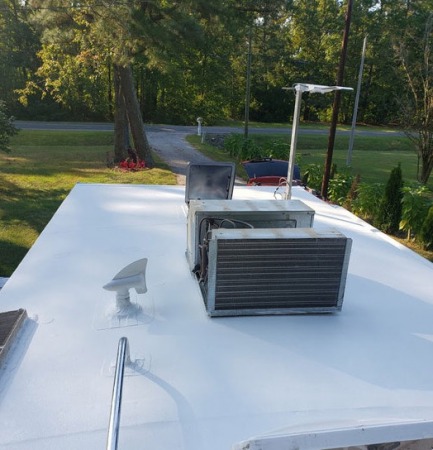
If you’re thinking about washing your camper’s rubber roof and are wondering what to use, you probably already know that there are plenty of great camper roof cleaners out there that you can buy. Check reviews to find one that meets your needs. But if you’re in a hurry or prefer a homemade option, you can make a cleaner with ingredients you probably already have at home.
We make our own roof cleaner and have tested a variety of ingredients and ratios that work best for us.
Don’t forget to protect the sides and ends of your camper by taping up a sheet of plastic or tarp. You don’t want all that grime ending up on your camper’s side panels or the oxidation from the peroxide to fade your paint.
Start with one gallon of water. Add 1/8 cup of liquid Dawn. Add one cup of ammonia OR two cups of hydrogen peroxide (never combine ammonia and hydrogen peroxide). The ammonia is an option if there is a lot of build up of dirt and organic matter (such as algae). The hydrogen peroxide is useful in lifting dirt and brightening the surface. Test the cleaning solution on a small area of your roof by letting it sit for a few minutes then rinsing. If you find that the area got “chalky”, that’s a sign that your roof is older and the rubber is breaking down. If that’s the case, you should reduce or eliminate the ammonia or peroxide; and you should probably apply a coat of liquid roof rubber after cleaning to protect your rubber membrane roof.
Powdered Tide laundry detergent is a popular way of removing a heavy build up, and can make the job easier if you need to do a deep scrubbing on the roof,
When you’re ready to begin cleaning, use a garden sprayer or a mop to apply the cleaning solution to 1/4 of your camper roof and let it sit for 10 minutes. The surface can get pretty slippery, so it’s best to work in small sections at a time. After 10 minutes, use a soft bristle brush to gently scrub the treated section of roof (even store bought cleaning solutions require you to scrub the roof). If you have a newer camper and your roof is in good condition, you might use a 2000 psi pressure washer held 18 inches from the surface. Rinse the area until all cleaning solution is removed. If the area is particularly dirty, you might need to repeat the process.
Move on to the next section of your roof, repeating the application and cleaning process until the entire roof has been cleaned and thoroughly rinsed off.
You can use a squeegee to speed up the drying process.
This is also a good time to inspect the caulk or lap sealant for needed touch ups. Bring a roll of tape to label areas that need repair or touch up.






